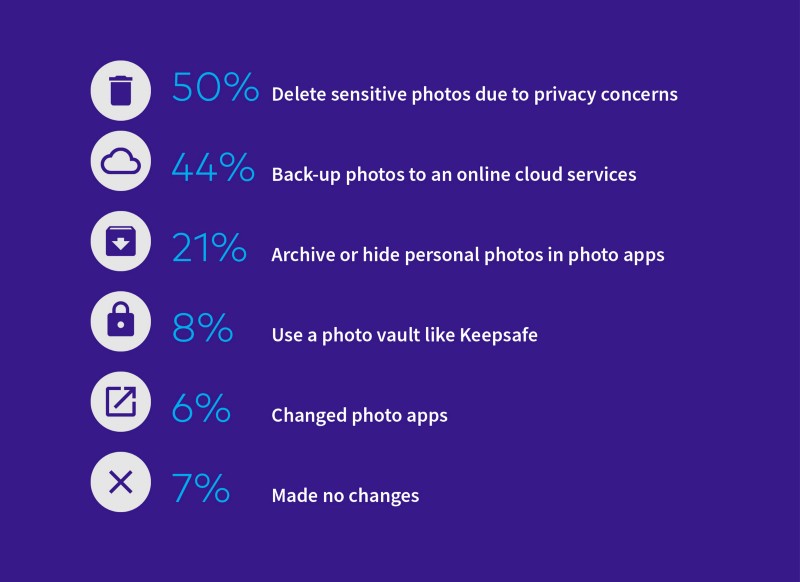
In June, we surveyed 500 Americans who use mobile devices for social media about their comfort-level with popular photo-sharing technologies on the market. The findings astounded and emboldened us at Keepsafe where our mission is to make privacy and security simple for all.
Results from the survey indicate that the photo-sharing market is fragmented. Though more than half of respondents cited Google Photos as the photo-sharing app that did the best job protecting privacy* (note: this survey was conducted using Google Consumer Surveys which may have influenced that result), no other product topped 15 percent. It’s a wake-up call to tech giants and developers building photo-sharing apps — privacy is a key feature people perceive and will trade on for the future.
Yet, what we’ve seen from technology giants as of late is more automated, revealing and intrusive AI features that people simply don’t want.
- 66% aren’t comfortable having geo-tag data passed on when uploading every photo
- 80% were less than comfortable with capturing facial recognition of people in photos
- 80% were marginally comfortable or less with AI-driven photo-sharing recommendations
- 56% were not at all comfortable with auto-sharing photos with people
It begs the question — who are photo-sharing apps developing features for and why?
We all know that many services offer people convenience and some free storage in an implicit exchange for selling people’s data to 3rd parties. (Keepsafe also has a freemium business model that shows ads in free versions of our products, but as a privacy company we keep people’s identities completely anonymous.) As tech giants create sleek, “convenient” and cool ways for people to share their photos, they appear to be doing so without regard for people’s privacy preferences. Moreover, it’s not a stretch to assume that big tech firms are doing so for their own gain, letting their own corporate agenda drive their decisions.
Because people no longer feel secure about their privacy, our survey also shows the way they are beginning to alter their behavior to compensate. For example, when it comes to protecting sensitive pictures from being hacked or compromised:

Almost all of our survey respondents changed their typical behavior — in the interest of protecting their photo privacy. It’s a prescient warning of the way personal freedoms erode when people’s privacy is on the line. It also underscores that people are paying attention.
Keepsafe’s survey further reflects a misalignment between photo-sharing offerings on the market today and people’s fundamental and growing desire to protect their personal privacy. As technology evolves at even faster rates, it’s up to tech leaders to balance new developments and profits with the common good. They’ll need to be more attuned to what their users really want. People’s desire for security is timeless, so it’s important to give them the information and tools to protect themselves as they lead social lives in a digital age.


